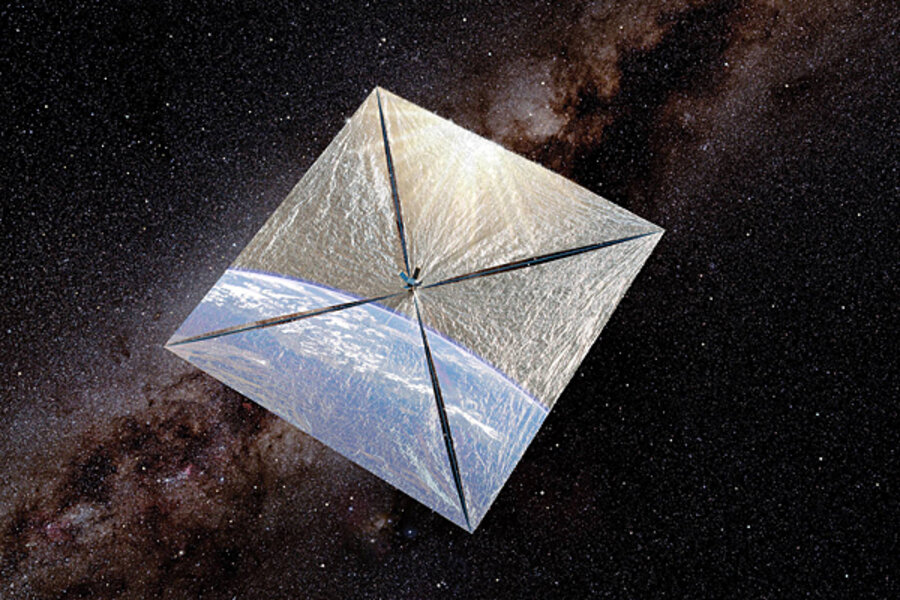Solar sail experiment could test Einstein hypothesis
Loading...
| New York
Solar sails that use sunlight pressure instead of fuel to fly through space have long been touted by space exploration advocates, but the novel space travel method could also be tapped to settle an unproven theory by famed scientist Albert Einstein.
A gossamer solar sail would be a prime platform for an experiment that would test the so-called frame-dragging hypothesis in Einstein's General Theory of Relativity, said Roman Kezerashvili, a professor of physics at New York City College of Technology. He presented the experiment concept during the International Symposium on Solar Sailing held here July 21 at the college.
Frame dragging is an effect where massive spinning bodies distort the fabric of space time like a whirlpool in water. It was hypothesized by Einstein, but has never been experimentally proven.
According to the theory, a spinning solar sail flying within 4.6 million miles of the sun should rotate differently than it would further out depending on the frame-dragging effect's strength, Kezerashvili said. So a motion sensor attached to a solar sail could test whether the frame-dragging effect exists at all, he added.
Solar sail possibilities
Kezerashvili's experiment is just one of the many possible uses for solar sails presented by scientists and sail advocates during the three-day symposium.
Solar sails are reflective arrays just one-fifth the thickness of saran wrap, but can have an area comparable to half the size of a football field. They harness the pressure generated by the sun's light just as a cloth sail catches the wind, propelling a spacecraft as if it was a sailing ship.
TV's Bill Nye the Science Guy, incoming president of the Planetary Society, said the different solar sail shapes represent a maturing of the technology, with new designs cropping up to suite each mission type.
"We won't see solar sails converge on a single shape," Nye said. "They will be like helicopters. Helicopters come in many different shapes, each for a different job."
New life for space sails
Nye, Kezerashvili and other solar sail advocates have a new optimism for the This was not the first space propulsion concept thanks to Japan's Ikaros spacecraft, the first successful solar sail to fly through deep space.
The Japan Aerospace Exploration Agency (JAXA) launched the Ikaros solar sail in May along with a Venus orbiter called Akatsuki. Since them, Ikaros has successfully deployed itself, snapped photos of its gleaming silver sail and felt the first acceleration from sunlight.
Osamu Mori, IKAROS project leader at JAXA, said that later missions will combine solar sails with ion drives to deliver probes to Jupiter and the Trojan asteroids.
By hybridizing the solar sail propulsion with a more powerful engine like an ion drive, JAXA can enjoy the benefits of a solar sail, namely constant acceleration without any fuel, while still propelling a probe to a distant planet within a reasonable timeframe, Mori said.
And other solar efforts are gaining speed.
The Planetary Society has made several attempts to launch a solar sail in the past and has a new project, called Lightsail-1, slated to launch in early 2011. The mission uses a spare solar sail demonstrator left over from NASA's earlier Nanosail-D solar sail effort.
The NASA and the European Space Agency have plans for separate solar sail missions that could be launched through 2015, representatives from both space agencies said during the meeting.





